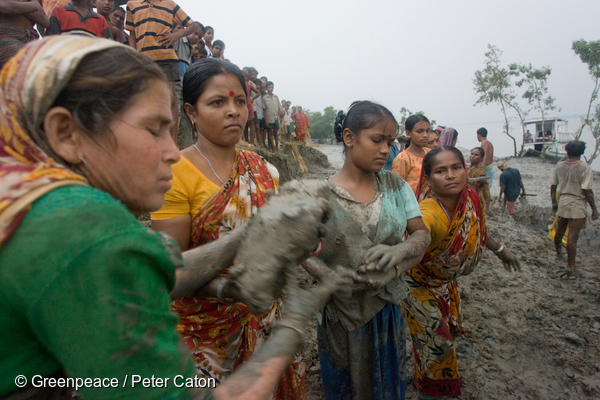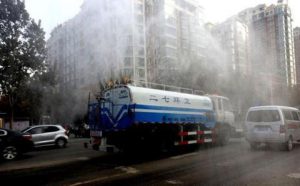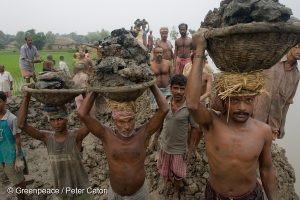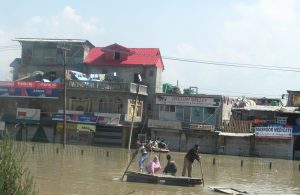With floods affecting millions of people and claiming more than 1,500 lives each year, India’s Central Water Commission (CWC) has planned a mobile application to speedily and accurately communicate gauge readings of river basins to central and divisional control rooms and others. This is vital for the correct forecast of water levels and hence the likely flood situation.
“Most disasters have been a result of communication failure,” said V.D. Roy, director of flood forecast monitoring at CWC. “There is scope for error and this error is what we want to reduce (with the mobile app).”
The country can’t be completely immune from the fierce tropical monsoons in the vast Indian subcontinent but the negative impacts can be minimised through various measures. Of the non-structural measures, flood forecasting and warning is the most effective method, especially in view of mitigating the damage caused due to floods.
About 32.43 million people are affected, 100,000 cattle killed and crops worth Rs.1,118 crore (US$175.5 million) damaged due to floods each year, all of which can have a major impact on the food security of an already climate stressed nation.
It becomes imperative to have an accurate system of flood forecast, particularly in view of climate change with increased precipitation and erratic rainfall pattern.
What the app will do
The mobile application is aimed at reducing manual errors in a system where field staffers manually note down readings at the gauges and communicate it to the control room through conventional channels, including a phone call.
This data is processed through telemetry but the need for 100% accuracy in flood forecasting has prompted the CWC to come up with the mobile application to reduce the error margin. As of now, this mobile app will be for internal usage only.
Data processing through telemetry is effective but manual collection of data is prone to human errors, said Roy. “Anything can go wrong in the field. If there is some kind of failure in the communication channel, the error can cost a lot in terms of accurate forecasting.”
For instance, a staff member in the field makes a phone call to the divisional/central control room to give information about readings and due to disturbance in the line the person at the other end fails to note down the correct numbers.
The proposed mobile application will totally eradicate the need of transmitting the data manually – through phone, mail or texts. Instead, field officers will directly enter readings from the gauges on their handheld programme. The software connects this field person in a remote location to a central server. In some cases, the field staff will also be able to directly take a photo of the gauge and send the same across through mobile application.
Lack of coordination
B.P. Yadav of the India Meteorological Department (IMD) said his department sends regular information on precipitation and the like to the CWC. “On a routine basis, it is sent once in a 24 hours. But for flood situation days, we escalate the frequency of information sharing. In recent times, at the behest of the National Disaster Management Authority (NDMA), we have even been holding frequent meetings (with CWC).”
Currently, the CWC has 176 monitoring stations and more than 850 gauge and discharge sites as well as 97 exclusive rain gauge stations. The CWC churns out inflow forecast (for assisting in reservoir water regulation, which in turn helps in regulating outflow from dams) and stage forecast (for warning the administration about possible increase in water level in a river and expediting relocation of people and cattle from the area likely to be affected).
Despite this, a parliamentary committee observed that “timely warnings do not reach people and there has been no decline in the number of casualties occurring due to sudden onset of floods”.
Pointing to the “lack of coordination between local administration and Central Water Commission in the matter of flood forecasting”, the panel strongly recommended that the water resources ministry take steps to upgrade the CWC’s flood forecasting infrastructure so as to disseminate information of impending floods well in time and avert disaster.
“This mobile application is very much part of the upgradation and modernisation of tools and techniques for forecasting,” said Roy.
Disclosing that the application was likely to be functional by next year, another senior CWC official said, “The information coming in from the field needs to be validated before it is used in the forecasting models. This app will help us to be more accurate.”
Flood damage
The Standing Committee on Water Resources (2014-15) has drawn attention to the whopping losses during annual floods. According to the committee’s report, between 1953 and 2012, an average of 7 million hectares and over 32 million people were affected by floods every year. The current estimate of the flood prone area in the country is 49.815 million hectares. Overall, 39 districts in India have been identified as chronically flood-prone.
India’s average precipitation is about 4,000 billion cubic metres a year, 75% of which falls during the monsoon (June-September).
Discussing the direct impact of climate change on water, the fifth assessment report of the Intergovernmental Panel on Climate Change (IPCC) has already warned that changes in precipitation in a warming world will not be uniform. The intensified hydrological cycles will see fewer rainy days but more intense rainfall on those days.
[otw_shortcode_info_box border_type=”bordered” border_color_class=”otw-aqua-border” border_style=”bordered” shadow=”shadow-inner”]Average annual flood damage in India during 1953 to 2012 (figures in bracket indicate the maximum damage)
• Area affected: 7.225 million hectares (17.5 mha in 1978)
• Population affected: 32.43 million (70.45 million in 1978)
• Human lives lost: 1,653 (11,316 in 1977)
• Cropped area affected: 3.789 million hectares (12.30 mha in 2005)
• Total damages to crops, houses and public utilities: Rs 3612.12 crore (Rs 32,554.77 crore in 2009)
(Source: the Parliamentary Standing Committee) [/otw_shortcode_info_box]





